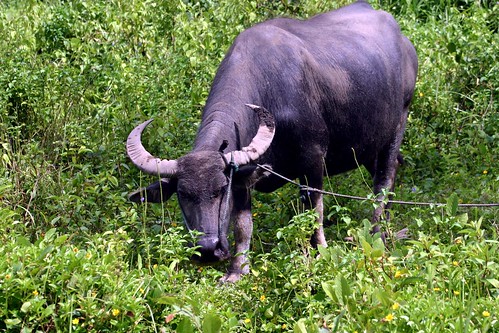To prove that carabaos eat grass, we have to realize that we cannot prove this with certainty unless we make an inventory of all the carabaos. Then and only then can we arrive at the conclusion that carabaos do eat grass. That is deductive reasoning.
On the other hand, there is inductive reasoning, wherein we resort to a contrary proposition that "carabaos do not eat grass". This we can easily disprove once we find enough carabaos who eat grass. We do so with the hope that failing to prove the contrary proposition, we can then accept the original proposition that yes, indeed carabaos do eat grass.
I owe this experiment to Fr.Conor Donnelly, an Irish priest who has doctorates in medicine, sacred theology and who knows, he may have earned another degree at Strathmore University. Anyhow, he says that in Batangas, he observes a carabao and with that observation, he concludes that the Batangas carabao eats grass. Moving north to Alabang, he observes another carabao and with that, he is convinced that the Alabang carabao also eats grass. Finally, he goes to Bulacan to observe another Carabao.
Now, I don't know how the good priest got to Bulacan, since his sphere of operation was north of Manila. Perhaps he was on his way to preach a retreat in Baguio. Or perhaps he was using a stratified random sampling approach to the experiment. Incidentally, statisticians are more likely to call this exercise as "test of hypothesis" and the original proposition of "carabaos eat grass" is referred to as the alternate hypothesis.
Why we call it alternate when it is the original hypothesis is just a distraction, so don't try to understand it. After getting immersed in hypothesis testing, you will one day understand it clearly. It's not a matter of divine revelation; educators call it experiential learning and there you are, we have drifted too far from the purpose of this post.
And so, lo and behold, the Bulacan carabao does eat grass. Never mind if he chews the grass longer than his southern compatriots. The important thing now is that we can reject the null hypothesis (oh yes, that's what it's called) that "carabaos do no eat grass." If we reject "carabaos do not eat grass", then any fool can plainly see that we have to accept the alternate hypothesis (it's the original proposition, remember?) that "carabaos eat grass".





